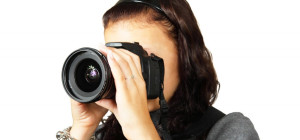 You saw them. The picture of raindrops rolling off leaves or a flower right before snow melts. When captured with their minute details, each of these photographs can surprise you with its amazing beauty.
You saw them. The picture of raindrops rolling off leaves or a flower right before snow melts. When captured with their minute details, each of these photographs can surprise you with its amazing beauty.
One thing is certain here. Macro photography offers the most attractive images.
So how can you join the clan of extraordinary macro photographers?
Here are a few tips that might come in handy.
Go for Manual Focus
Switch off autofocus while you take macro photos. Accurate focusing is quite critical since the depth of field is possible to measure in millimeters when you shoot close-up details. This is made easy with the Live View of your DSLR. By magnifying the area you want to focus on and by turning the focus ring of the lens, it is possible to position the point of focus. Go easy with the focus ring since the difference between just-sharp-enough and razor-sharp is not much. You can consider using a tripod since even small movements can wreak havoc here.
Choose the Right Aperture
For increasing the depth of field, use small apertures. You can switch to the Aperture Priority mode. This will allow you to set a given aperture. For small apertures, you can go for large f-numbers. Avoid highest f numbers offered by your lens as that will cause soft pictures. If you face difficulties in finding everything at a given aperture setting, you can try to use the focus stacking technique to increase the depth of field.
Break the Rules
You need not always use the small apertures to make an impact. You can also use the largest apertures available in your lens. However, you need to be spot on with the focusing, since wafer-thin depth of field leaves very little room for error.
Using selective focus and wide apertures to sandwich sharp subjects between blurred background and foreground is a popular ploy. Complete defocusing of the lens often leads to abstract blur, a trick popularly used in flower photography.
Have Patience
Learn the art of being patient. Avoid running like mad photographs chasing an insect that refuses to sit still. This will never work. There are several insects that are curious of you just as you are of them.
Try the Extension Tubes
Experiment with the extension tubes. They are not much pricey. If you view a picture's EXIF data and find that the focal length and the aperture are shown as zero, there are high chances of the photographer using an extension tube or an equipment that sat between the lens and the camera body.
If you don't know what the extension tubes are, let me tell you, it's a plastic tube sitting between the body and the lens of your camera. While you use these tubes, set the lens to manual focus. The automatic focus will not work. If you purchase the extension tubes of the same brand as the macro lens, you will probably be able to use the macro functions.
Make Proper Use of Backlight
Use sunlight to capture the details that you don't get to see otherwise. Though most of you prefer to avoid shooting in the morning sunlight, it's of great help if you are fond of macro photography. Be careful not to capture the lens flare. You can try several angles to find the best position.
Create a Background Yourself
The quality of background can make or break your pictures. Macro lenses enjoying long focal lengths will allow you to restrict the things that make into the picture's background. However, out of focus highlights and distracting colors are unavoidable. You can build up a collection of backgrounds that are possible to substitute, if essential. You can use sheets of colorful cards, blurred natural background, or soft clothes that can double as an even background.
Fine Tune Macro Pattern Composition
Though it is possible to crop things later, it is better to fine-tune composition during the time of shooting. With the close-up pattern details, make sure that there are no gaps around edges. You can also show the whole pattern with spaces all around.
Use a Tripod to Reduce Camera Shakes
Using a tripod will allow you to reduce camera shake and thereby, prevent blurred images. While photographing small objects, you need stability. Maybe you are nervous and that's causing the shake. With macro photography, you are bound to face a myriad of uncomfortable situations; you may need to lie or squat down close to the ground to take that perfect shot.
Avoid blurred shots by using a tripod. This will not just carry the weight of your camera but allow you to manipulate positions as well.
Accessibility plays a significant role in popularizing macro photography among both the beginners as well as professionals. Just follow a few strategies to take the perfect click.







